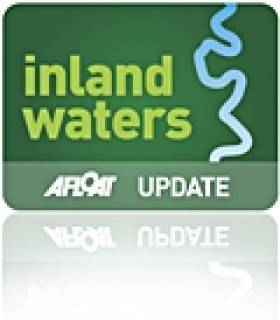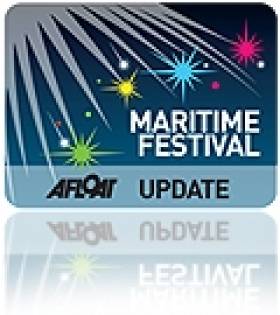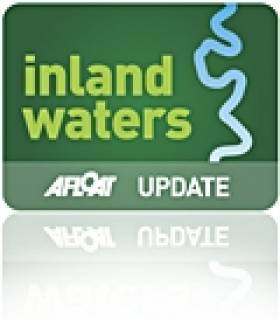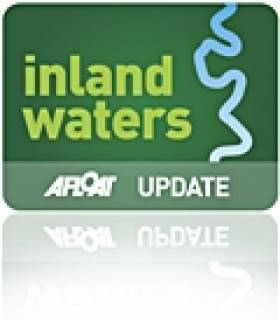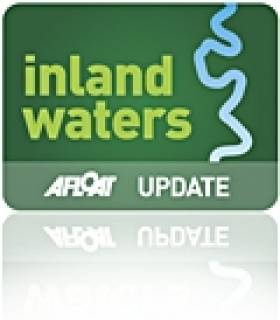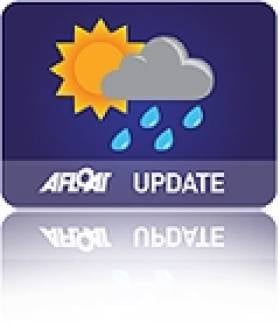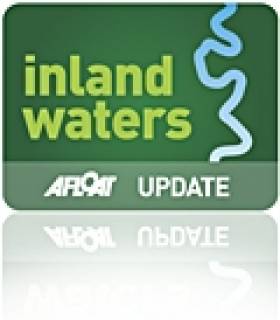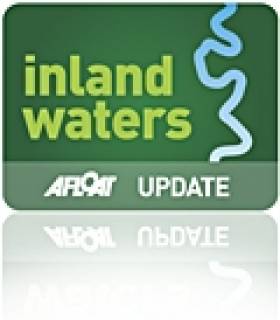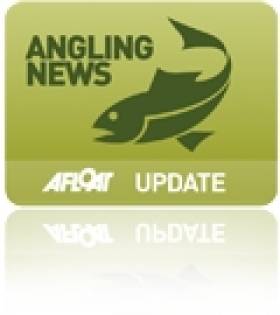Displaying items by tag: Grand Canal
Canal Mooring Rules Change
#canals – Waterways Ireland has recognised that many boat owners wish to stay for a more extended period in a single location than the five days the annual Canal Mooring and Passage Permit (under the Canals Act, 1986 (Bye-laws), 1988) currently allows.
In response, Waterways Ireland intends to issue an Extended Mooring Licence granting a boat owner the right to leave their boat in one location for longer than 5 days. This permit will enable the holder to moor in a position allocated by Waterways Ireland on a soft bank area of navigation property for a period of up to 1 year. The Extended Mooring Licence will cost €152 per annum.
The application process for the Extended Mooring Licence will open in the autumn when all existing permit holders will be contacted.
All boat owners will still require an annual Canal Mooring and Passage Permit allowing the holder to cruise and pass through locks. Boat owners with a Canal Mooring and Passage Permit proposing to stay longer in one location than 5 days can then apply for the Extended Mooring Licence. The total fee to hold both the Permit and the Licence in 2012/2013 will be €278.
For boat owners with the Canal Mooring and Passage Permit who do not hold an Extended Mooring Licence the 5 day rule (in the one place or within 500m of that location) will still apply. Waterways Ireland will enforce this bye-law from autumn 2012.
Waterways Ireland will be contacting permit holders regularly between now and autumn 2012 to ensure they are kept up to date with the roll-out of the new permit. All queries about the enforcement of the current bye-laws or the Extended Mooring Licence should be directed to Shane Anderson, Assistant Inspector of Navigation: Tel no +353 (0)87 286 5726, Email [email protected] .
These changes are necessary steps to improve the management of the canals and waterway amenities for both the navigational and recreational user, so that investment in the new infrastructure and facilities which Waterways Ireland has undertaken is maximised for every user.
#DOCKLANDS – The Waterways Ireland Docklands Summer Festival 2012, bathed in gorgeous sunshine was a highly fun and exciting family event with over 100,000 people in attendance over the two days. The festival ran over Saturday 26th and Sunday 27th May and took place in the Docklands around the Grand Canal Basin.
Sponsored by Waterways Ireland and organised by members of Docklands Business Forum(DBF), the 2012 festival follows on from its inaugural success in 2011. Speaking at the launch, John Martin Chief Executive Waterways Ireland said "The Waterways Ireland Docklands Summer Festival highlighted the superb resources that the waterways provide within Dublin City Centre. All the organised events encouraged the public and those who work and live around the Docklands to participate in waterway activities and enjoy the fun and frolics off the water."
Last year over 50,000 people visited the festival. This year the organisers added even more events to ensure a bigger and better family day out. 100's of people watched the dragon races and thrilling wakeboarding demonstrations by the Irish Wakeboarding team and some even tried walking on water in a 'Waterroller!'. The Viking's from Dublinia invaded the Waterways Ireland Visitor Centre, running free children's crafts workshops, demonstrating Viking crafts, playing Viking games. All the workshops were fully subscribed. The Irish Navy has queues both days for visits to the L.E. Aoife on Sir John Rogersons Quay for the weekend.
The DBF in conjunction with Irish Village Markets provided face painting, balloon modelling and kiddies amusements. The performers from the World Street Performance Champions were also there and Irish Village Markets served up delicious foods from around the world. Visitors will also enjoyed food from a wide range of local suppliers including Il Valentino, Ely Restaurant and Herb Street.
As a special promotion local water sports experts, Surfdock, ran "come and try it" sessions. For those who fancy trying the exciting new sport of stand up paddling or have a go at kayaking the half-hour classes running over both days provided a great opportunity and were fully booked.
The local shops and businesses sold rubber ducks for a duck race in aid of cancer research charity Biobank Ireland and had a great turn out both days.
River Barrow Has Potential for Tourism
#INLAND WATERWAYS - A new study on the River Barrow and its environs recommends the development of "activity hubs, tourist trails and new angling and boat facilities", The Irish Times reports.
Waterways Ireland and Fáilte Ireland commissioned the Barrow Corridor Recreational, Tourism and Commercial Identification Survey to find ways to exploit the area's "undeveloped potential" for tourism.
The survey covered the river itself as well as its estuary and the Barrow branch of the Grand Canal. Its findings pointed to a number of areas where development is already being actioned, such as in boating and cruising, nature and wildlife, and angling.
Environment Minister Phil Hogan, who launched the study in Carlow yesterday, hailed the co-operation of the agencies and county councils involved.
The Irish Times has more on the story HERE.
Pigmy Weed Forces Grand Canal Stretch Closure
#GRAND CANAL – There will be a Navigation Restriction from the Kilpatrick Bridge area to Ticknevin Lock (Marine Notices No 124 and 132 of 2011 refers)
The Closure to navigation will be extended from 29th February 2012 to 5th April 2012 inclusive to facilitate the control/eradication of the invasive aquatic plant species Crassula Helmsii (New Zealand Pigmyweed).
Bidding Begins for Shannon Harbour Houseboat Berths
#SHANNON - Waterways Ireland has just released details of its scheme for renting berths for houseboats on the Grand Canal at Shannon Harbour.
Under the scheme, boaters can rent one of eight fully-serviced berths for their houseboat on a 12-month extended term licence running from 15 March 2012 to 14 March 2013.
Amenities on-site include electricity supply, access to pumps and clean water, shower facilities and limited car parking. Pre-paid smart cards are required to utilise some facilities.
As space is limited, the berths will go to the highest bidders, with the minimum acceptable bid set at €1,250 (a security deposit of €250 is required).
It is expected that licence holders will live on board their vessels as their main residence. Winning bidders are also expected to arrange their own refuse collection from the site.
The closing date for bids is 23 February 2012. The Waterways Ireland website has the application form plus more information about the scheme and details of the licence agreement.
Grand Canal Closure to Boat Traffic at Ardlough
#GRAND CANAL – Works will commence on an Ardclough Flood Alleviation Scheme on 30th January 2012 necessitating closure of the 13th Level of the Grand Canal at Ardclough, Co. Kildare east of Henry Bridge. The canal will be closed to boat traffic until 17th March 2012.
There will also be no through access on the towpath between Henry Bridge and Aylmer Bridge during this period.
Easy Swim at Forty Foot on Warmest Christmas Day in Years
#WEATHER - Those hardy Yuletide bathers at the Forty Foot in Dublin didn't need to be so brave this year, as Ireland experienced one of the warmest Christmas Days on record.
Just one year ago Ireland was in the grip of a deep freeze. But as the Irish Independent reports, temperatures on Sunday last rose to as much as 14.4 degrees in Co Cork.
It's been almost a decade since late December temperatures reached such levels, when Christmas in 2002 saw highs of 14.6 degrees according to Met Éireann records.
Sunny spells on the east coast brought out the polar bear plungers to Sandymount and the Grand Canal as well as the famous Forty Foot bathing spot in Sandycove.
The Irish Independent has more on the story HERE.
Barrow Line of the Grand Canal Closes for Repairs
Waterways Ireland say the closure is required to carry our essential maintenance on the lock gates and chamber.
Winter Closures on the Royal Canal, Grand Canal and Barrow Navigation
#WATERWAYS – In its latest marine notice Waterways Ireland has advised masters and owners of vessels that the following planned closures will be in place for the winter of 2011-2012.
GRAND CANAL – MAIN LINE
2nd Lock, Inchicore The canal will be closed at the 2nd Lock from December 2011 to February 2012 for the replacement of lock gates.
Ardclough The canal will be closed east of Henry Bridge to facilitate the laying of a storm water culvert by Kildare County Council – dates to be confirmed.
Tullamore The canal will be closed from 7th November 2011 to 5th March 2012 to facilitate the construction of three footbridges and a boardwalk by Tullamore Town Council.
Ballycommon The canal will be closed to facilitate dredging – dates to be confirmed.
GRAND CANAL – BARROW LINE
Glenaree to Rathangan The Barrow Line will be closed between 22nd Lock at Glenaree and 23rd Lock at Rathangan from 1st November 2011 to 17th March 2012 to facilitate dredging.
ROYAL CANAL
Spencer Dock, Newcomen Bridge There will be no further lifts of Newcomen railway bridge until the 2012 boating season.
1st to 5th Locks, Dublin The locks will be closed from November 2011 to March 2012 for repairs to the gates.
5th and 6th Levels, Cabra The canal will be closed until January 2012 for dredging and relining of the channel.
8th Lock, Reilly’s Bridge The lock will be closed from November 2011 to March 2012 for repairs to the gates.
33rd to 34th Lock The canal will be closed for essential maintenance works – dates to be confirmed.
Mosstown Harbour to 41st Lock The canal will be closed for essential maintenance works – dates to be confirmed.
BARROW NAVIGATION
Bagenalstown Lock The lock will be closed for essential maintenance – dates to be confirmed.
Slim Pickings for IWA Angling Day
There was a big turnout for the Irish Wheelchair Association's annual Angling Day recently, The Irish Time reports.
As many as 90 competitors, representing 11 angling centres across the country, staked out spots along the Grand Canal at Lucan for the seventh year running.
Gusty conditions on the day resulted in a grand total of zero catches in the three-hour competition - a stark contrast to last year's contest when more than 30 were caught and released.
But the anglers didn't let that get their spirits down, as the day was rounded off with a packed-out barbeque for competitors and volunteers.
The Irish Times has more on the story HERE.


























